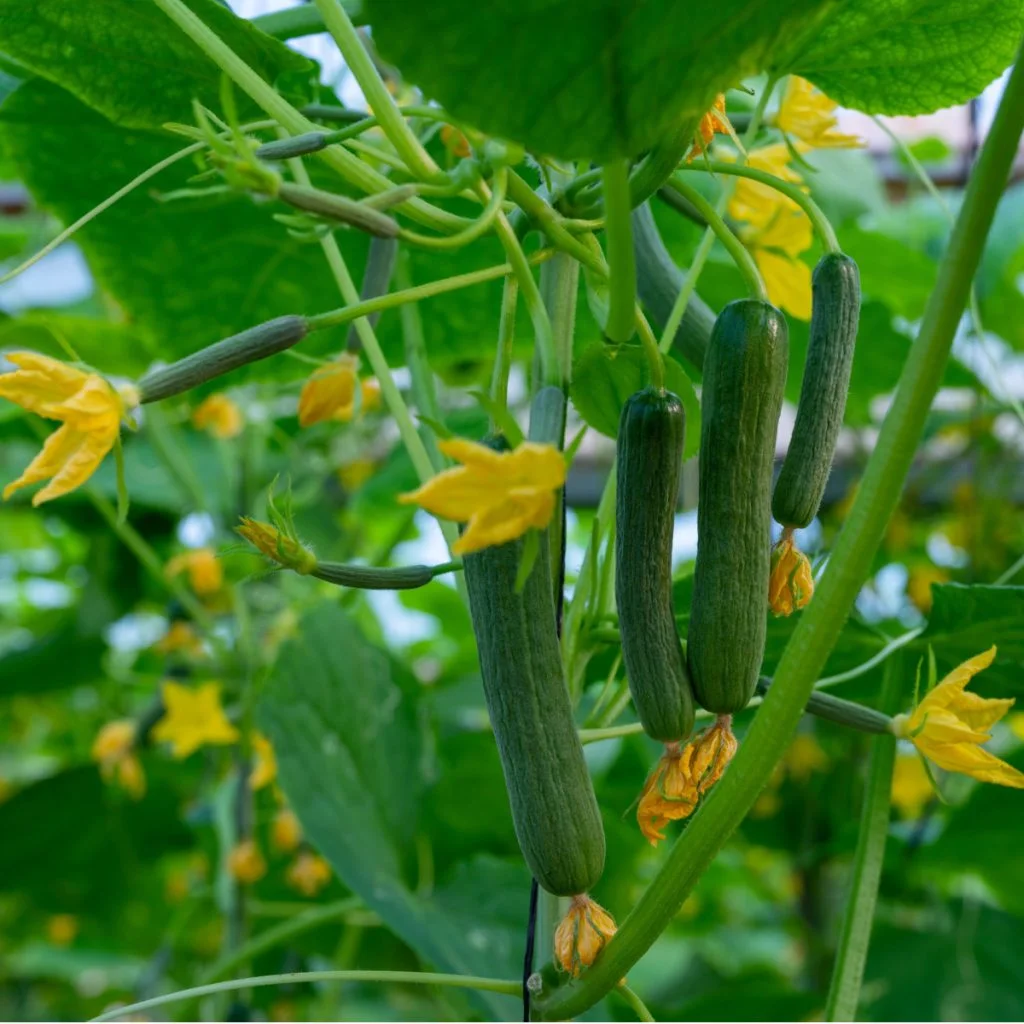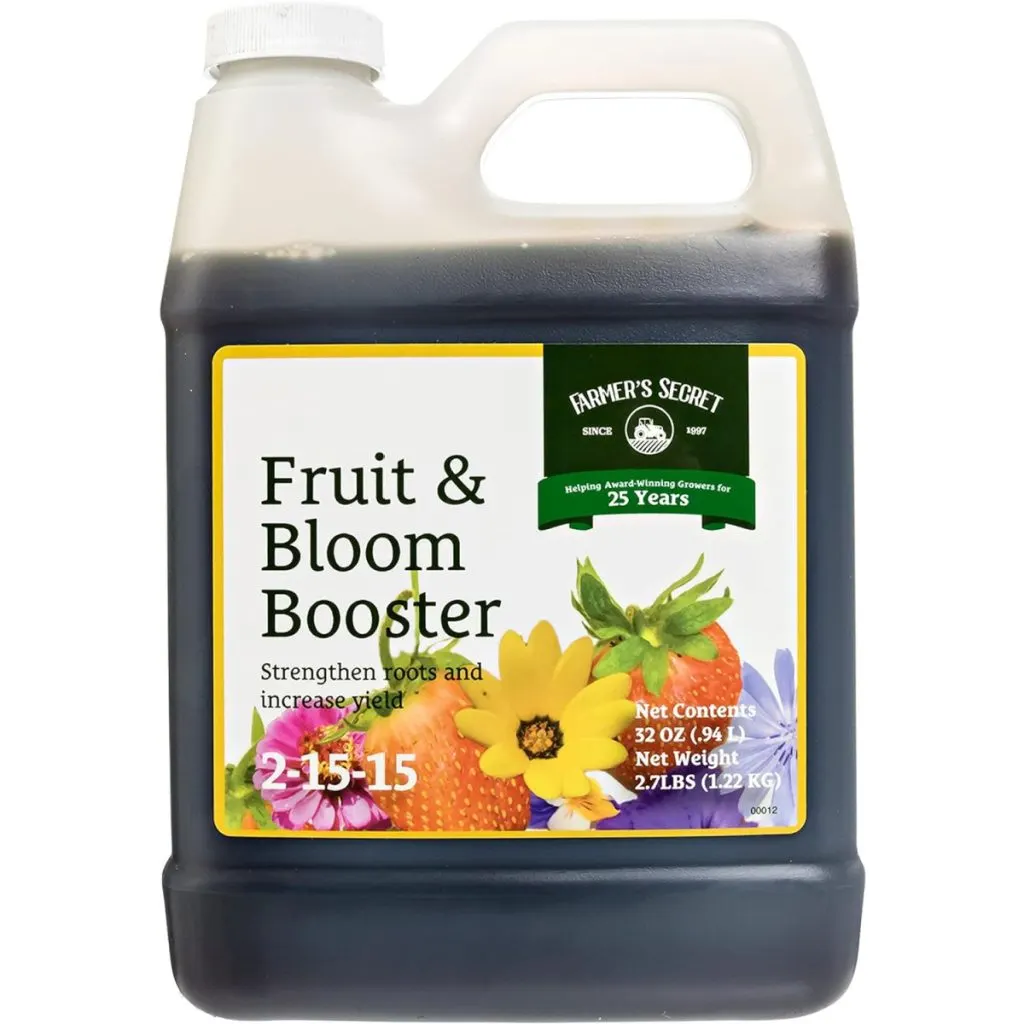One of the best ways to keep your cucumber plants healthy and productive is by feeding them the perfect mix of nutrients. And not just when they are young or starting to produce – but all season long on a consistent basis.
Cucumber plants are some of the fastest-growing and most productive vegetables you can grow in a home garden. And with just a bit of care and the right support, a few healthy vines can supply you with dozens of crisp, juicy cucumbers all summer long.
But there’s one thing every gardener needs to know if they want those vines to actually produce that kind of success – cucumbers need the right nutrients to grow and keep producing!

If your cucumber plants aren’t blooming well, or if they’re putting on lots of green growth but not many flowers or fruit, the problem almost always comes down to poor nutrition. Or more accurately, the wrong kind of nutrition.
Fortunately, feeding your cucumbers correctly doesn’t mean using a lot of complicated fertilizers. In fact, with just two simple but powerful feedings, you can keep your plants strong, healthy, and full of blooms.
Feeding Cucumber Plants For Growth – And Productivity!
Why Nutrients Matter So Much For Cucumbers
Cucumbers are what many gardeners call “heavy feeders.” From the time they sprout, cucumber plants start forming vines and leaves at a rapid pace. Soon after, they shift into flowering and fruit production. All of that takes energy – a lot of energy.
Without regular feeding, plants will either grow a lot of foliage with few blooms, or it will begin to weaken, slowing down both growth and fruit production.
What’s more, cucumbers have shallow root systems, especially when compared to crops like tomatoes or corn. That means they can’t dig deep into the ground to find food. So if the top layer of soil is lacking in nutrients they have nothing left to draw from.

That’s why feeding your cucumber plants regularly is one of the most important things you. And when it comes to doing that, two methods stand out above all the rest.
#1 Feeding Cucumber Plants Monthly With Worm Castings
The first key to feeding cucumbers for success is to apply worm castings to the base of each plant once a month. This simple organic material is often overlooked. But it might just be one of the best fertilizers you can give to your cucumber plants.
Worm castings are essentially worm manure. But don’t let that simple definition fool you. These tiny black granules are packed with beneficial nutrients, bacteria, and microorganisms that not only feed your plants, but also help improve the structure and fertility of your soil. See: How To Use Worm Castings To Power Plants – The 100% Natural Fertilizer That Works!
For cucumber plants, worm castings are the perfect slow-release food. By simply sprinkling one cup of worm castings around the base of each plant each month, they slowly release nutrients every time you water or it rains. Work them lightly into the top inch of soil with your hands or a small garden fork.
What makes worm castings even better is how safe and natural they are. Unlike chemical fertilizers, they won’t burn plant roots. And because they don’t contain high levels of quick-acting nitrogen, they won’t cause your plants to grow too fast with big leaves and no fruit.
Liquid Fertilizing – Targeted Power For Blooms & Fruit
While worm castings provide a slow and steady supply of nutrients, cucumbers also need a more direct feeding. Especially when they’re entering their blooming and fruiting stages.
That’s where liquid fertilizing comes in. By using a liquid fertilizer every 10 to 14 days, you can quickly provide the nutrients your plants need right when they need them most.
But here’s the key – not just any fertilizer will do. In fact, many all-purpose fertilizers contain too much nitrogen, which causes cucumber plants to put all of their energy into growing long vines and huge leaves – but not flowers.
If your cucumber vines are huge but you’re not seeing many blossoms or fruit, that’s a sure sign they’re getting too much nitrogen.
Choosing The Right Liquid Fertilizer For Feeding Cucumber Plants
Instead, you want to use a liquid fertilizer that has far more phosphorus and potassium compared to nitrogen. These two nutrients are essential for flowering and fruit development.
Phosphorus helps the plant form blooms and develop strong root systems. Potassium strengthens the plant overall, helping it resist disease and produce quality fruit.

The important thing is that phosphorus (the middle number) and potassium (the last number) are both higher than nitrogen (the first number). Affiliate Link: Farmer’s Secret Fruit & Bloom Booster Fertilizer (32oz) – Super Concentrated
Don’t Stop Picking Those Cucumbers!
Even with proper feeding, one of the biggest mistakes gardeners make with cucumbers is not harvesting often enough.
If cucumbers are left to grow too big or stay on the vine too long, they send a message to the plant to stop producing blooms. And when that happens, the plant begins to slow down production. It thinks it has done its job and starts putting less energy into making more fruit.
By picking cucumbers early and often, you actually keep the plant in production mode. The more you harvest, the more the plant keeps flowering and setting new cucumbers
With a little attention and the right kind of feeding, your cucumber plants will reward you with a harvest that just keeps on coming. For tips on how to fertilize your garden the right way, be sure to check out: The Biggest Mistake Gardeners Make Fertilizing Vegetable Plants – And How To Avoid It!
Simple Garden Life
Follow Our Facebook Page For Even More Great Tips! Simple Garden Life Facebook Page
Simple Garden Life is a website dedicated to keeping gardening fun, simple and enjoyable! We publish two new articles each week along with a new garden podcast episode every two weeks. This article may contain affiliate links.
